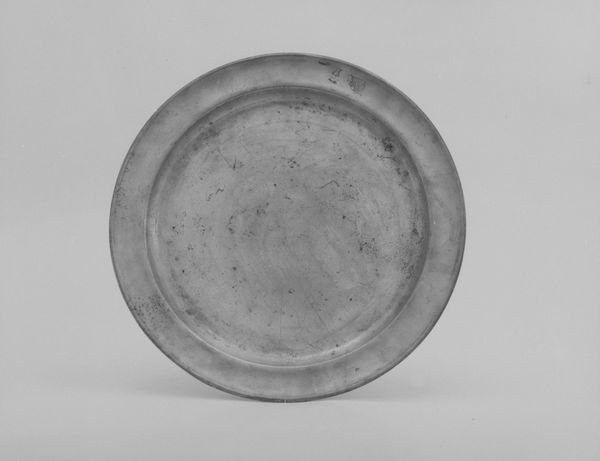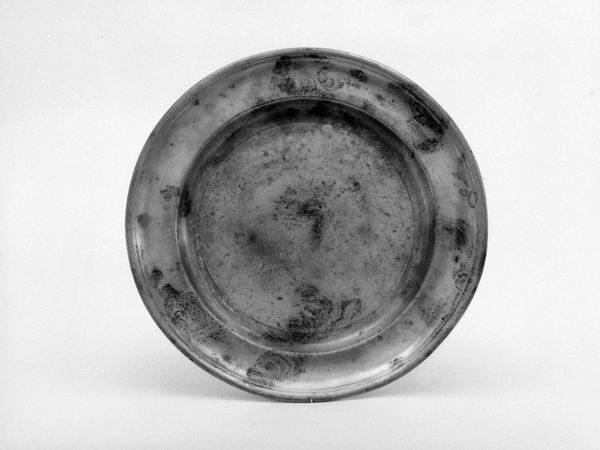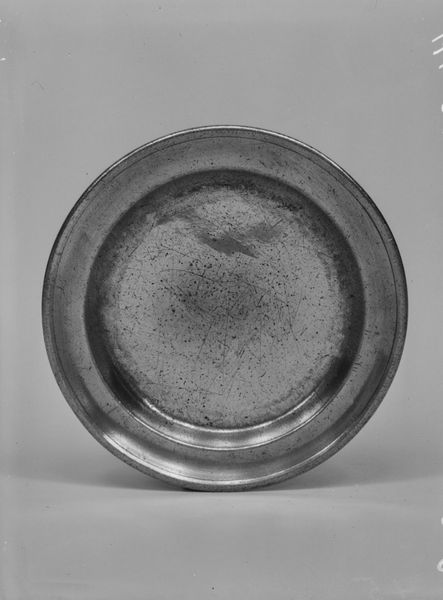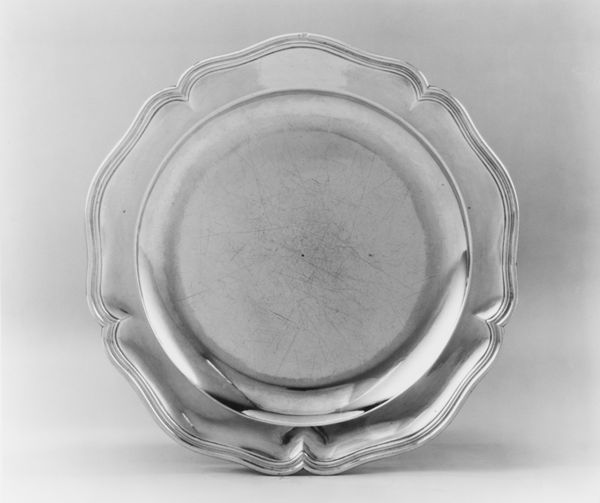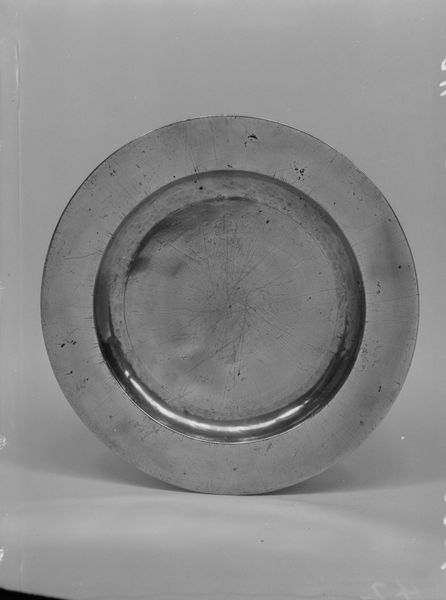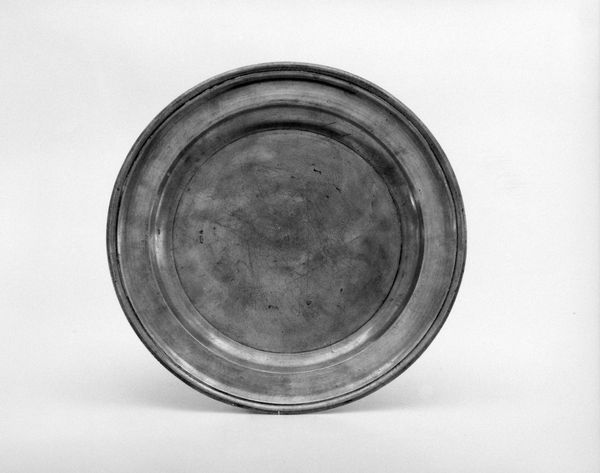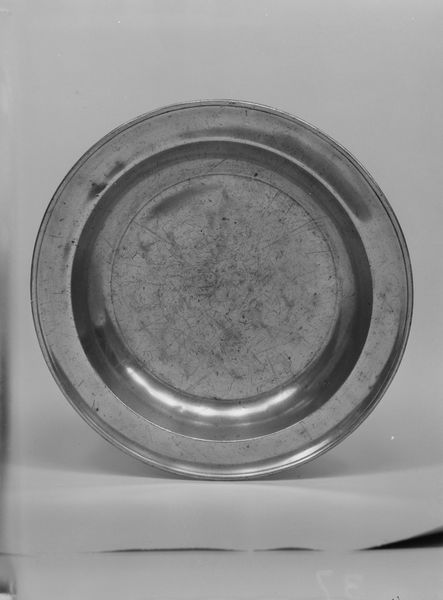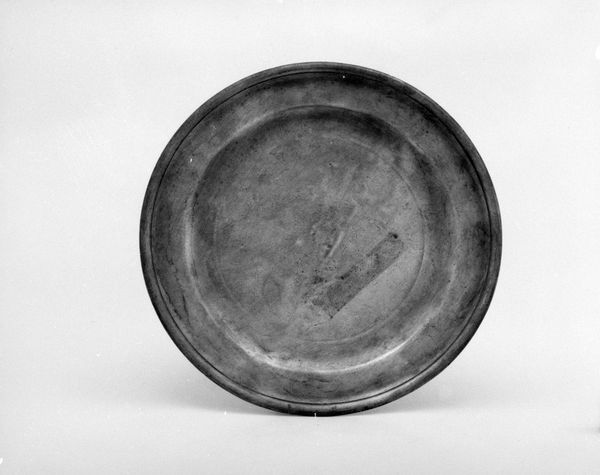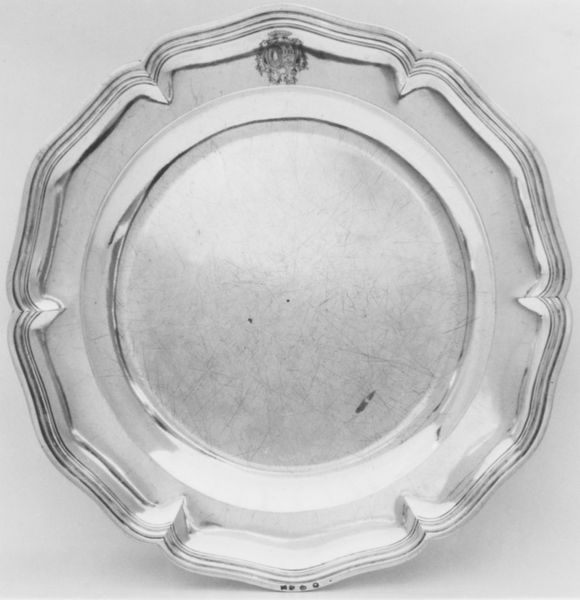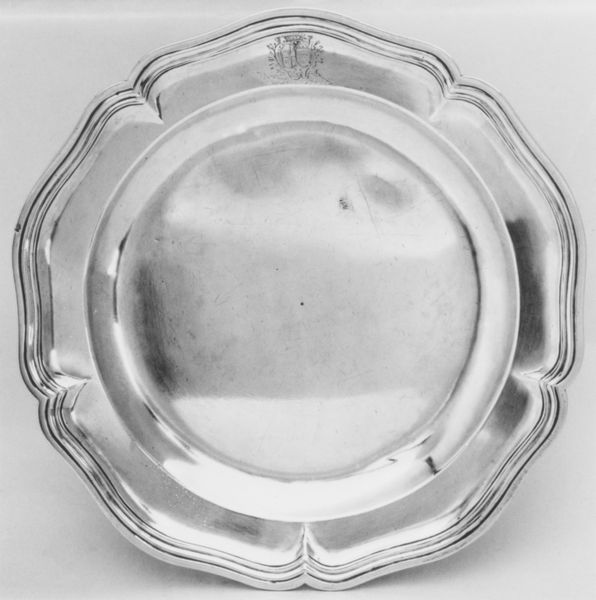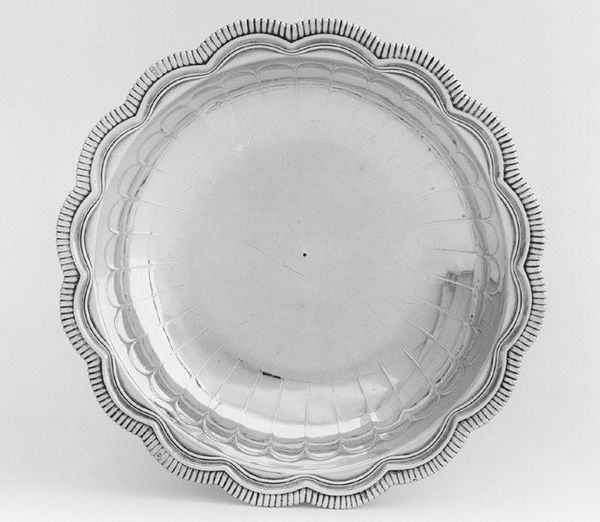
metal, photography, sculpture
#
metal
#
photography
#
stoneware
#
sculpture
#
product photography
#
decorative-art
Dimensions: Overall: 1 1/2 × 9 5/16 in. (3.8 × 23.7 cm)
Copyright: Public Domain
Curator: What a compellingly simple form. Immediately, my eye is drawn to the play of light across the metallic surface. It has such subtle gradations of tone. Editor: It does have a subdued elegance. This piece is an 18th-century dish, currently held here at the Metropolitan Museum of Art. Attributed to Jean-Jacques Bruckner, its reflective pewter whispers tales of dining halls and formal meals. Curator: Pewter… that lends a gravity. You see, the composition—that perfect circle broken only by the fluted edge—speaks to a universal ideal of order. The curve moves inward and implies an empty space…waiting to be filled. It engages directly with phenomenological notions of absence and presence. Editor: It certainly would have been filled. Think of it at the center of a table setting. Consider the social hierarchies dictating who used such wares, the rituals surrounding communal eating, and how even mundane objects became signifiers of class and status. Curator: Absolutely, but consider the craft. The way the material itself behaves, how its density absorbs and reflects ambient light…this isn't mere functionality; it's visual language. We decode a kind of rustic refinement. The tool marks and uneven texture only enhance it. Editor: It is beautiful, no question. What I find fascinating is how this single dish encapsulates the broader trends in decorative art. What looks like simple, everyday life to us now represented complex structures of labor, trade, and patronage then. A real commentary on eighteenth-century societal stratification, in some ways. Curator: Yes, exactly. And through analyzing this dish, we see those relationships reflected materially and spatially. A closed circle becomes an expanding ripple through historical consciousness. Editor: Right. We've gone from the purely aesthetic to broader questions of its role in a social setting, hopefully offering our listeners new insights into seeing beauty, craft, and the social dynamics contained within even the simplest-seeming object. Curator: Precisely. An interplay of aesthetics and historical understanding allows the work to yield far more than one may realize. A fruitful exchange, indeed.
Comments
No comments
Be the first to comment and join the conversation on the ultimate creative platform.
